Meet Jared, the second oldest man in the Bible, whose life story reveals intriguing insights into biblical longevity and lineage.
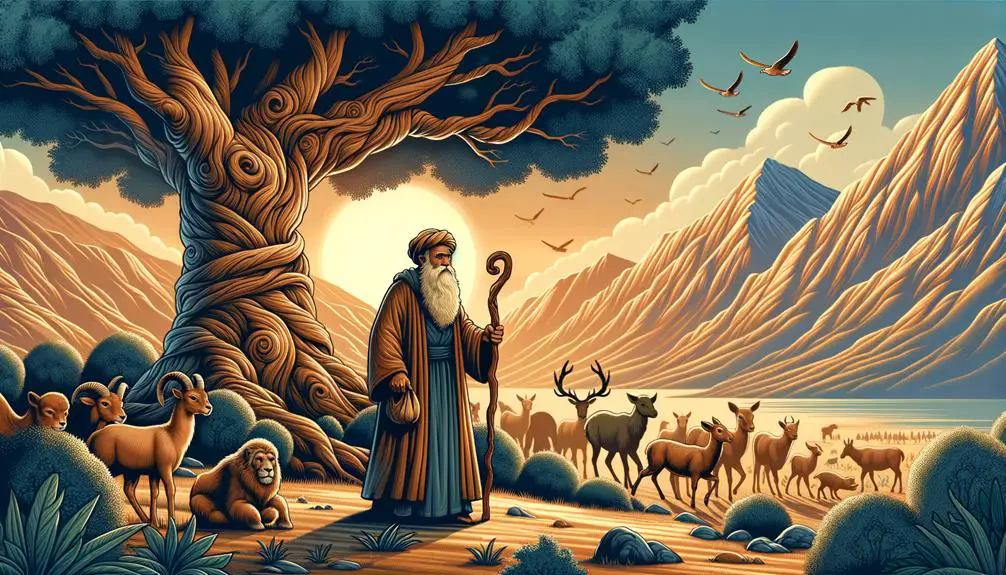
Who Was the Second Oldest Man in the Bible
Have you ever wondered who stands behind Methuselah as the second oldest man in the Bible? It's a question that often leads to intriguing discussions about biblical longevity and the significance of these ancient lifespans.
Jared, often overlooked, plays a pivotal role in this narrative, but what makes his story so compelling isn't just his age. As you explore Jared's life, his place in history, and how his legacy contrasts with Methuselah's, you'll uncover layers of meaning that challenge our understanding of time, lineage, and faith.
This journey through biblical history offers more than just numbers; it invites a deeper reflection on the lessons these patriarchs impart.
Key Takeaways
- Jared, a significant biblical figure, was the second oldest man in the Bible.
- His long lifespan symbolizes divine favor and human destiny intertwined with ancestral lineage.
- Jared's age and story contribute to scholarly discussions on ancient longevity and divine intervention.
- Understanding Jared's place in biblical genealogy offers insights into cultural reverence for elders and the transmission of wisdom across generations.
Jared's Place in History
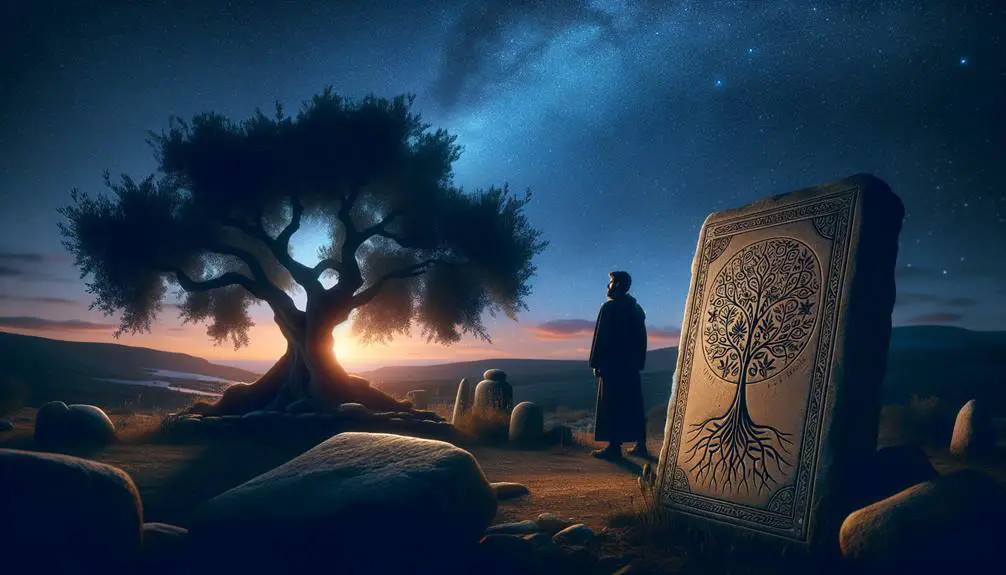
Jared's historical significance, as chronicled in ancient texts, marks him as a pivotal figure in biblical genealogy, indicating his profound impact on early human lineage and theological narratives. His story, deeply embedded within the fabric of ancient scripture, offers you a unique lens through which to view the complexities of divine favor and age symbolism in early religious texts. Jared's role isn't merely historical; it's emblematic, serving as a bridge between the divine and the mundane, illustrating how age wasn't just a number but a symbol of wisdom, divine favor, and, perhaps, a closer relationship with the divine.
You'll find that age symbolism in Jared's context goes beyond mere longevity. It's a testament to divine favor, a tangible sign of the deity's preference and blessing. This aspect of his narrative isn't just a footnote in ancient texts but a central theme that underscores the belief in a tangible, rewarding relationship between the divine and those deemed righteous or favored. Jared stands as a testament to this belief, his long life symbolizing not only divine favor but also serving as a marker of spiritual significance and authority.
As you delve deeper, you'll see that Jared's place in history isn't incidental. It's a carefully constructed narrative element that speaks volumes about the values, beliefs, and theological aspirations of the time. His story is a rich tapestry of themes and symbols, each thread contributing to our understanding of the complex relationship between humanity and the divine, and how this relationship was conceptualized and narrated in ancient theological discourse.
The Biblical Lifespan
The concept of longevity, as depicted in biblical narratives, offers a fascinating window into the ancient world's understanding of divine favor and human destiny. You delve into these stories to uncover the extraordinary lifespans attributed to figures, such as Methuselah and Noah, and can't help but wonder about the underlying messages. These accounts, steeped in symbolism and moral teachings, present longevity not just as a biological anomaly but as a sign of God's blessing or a tool for fulfilling divine purposes.
When you juxtapose these ancient perspectives with modern comparisons, the contrast is stark. Today's aging research focuses on the biological mechanisms behind aging and the potential for extending human life. Scientists explore genetics, lifestyle, and environmental factors that influence longevity, aiming to improve quality of life rather than simply adding years to it. The biblical narrative's emphasis on numerical age fades into the background as you consider the complexities of modern aging.
Moreover, the biblical lifespan, often reaching several hundred years, invites you to ponder the evolution of life expectancy. Across centuries, improvements in medicine, nutrition, and sanitation have dramatically increased human lifespans, yet they pale in comparison to the ages recorded in biblical texts. This disparity prompts a deeper exploration of the ways in which these ancient stories intersect with, yet diverge from, contemporary understandings of aging and longevity.
In essence, the biblical portrayal of lifespan serves as a historical lens through which you can explore the multifaceted relationship between divine favor, human destiny, and the quest for longevity. Through this lens, you gain insights into the values and beliefs of ancient societies, and how these contrast with today's aging research and its implications for understanding human life.
Family Lineage
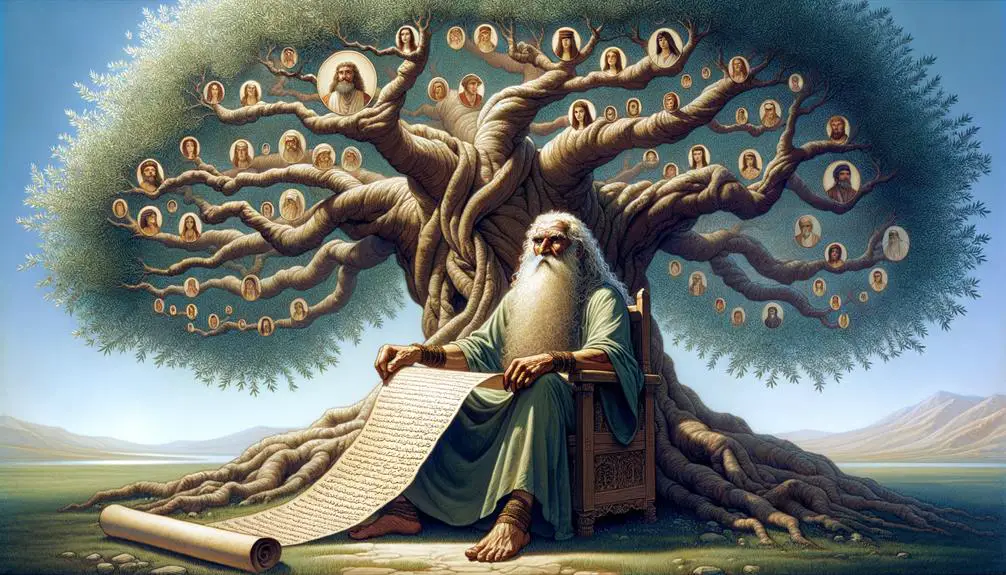
You must consider the ancestral connections to understand the profound impact of family lineage within biblical narratives.
The generational lifespans noted in scripture not only highlight a lineage of longevity but also provide insight into the social and spiritual fabric of the times.
Ancestral Connections
Delving into his ancestral connections, Methuselah stands out in the biblical narrative due to his direct lineage linking him to Adam through Seth, and further down to Noah, marking a significant thread in the tapestry of early human history as documented in religious texts.
This lineage not only bears genetic implications, suggesting a fascinating study of hereditary longevity and potential predispositions passed through generations, but also holds immense cultural significance. It highlights the reverence for elders and the transmission of wisdom across generations, underpinning the societal structure of ancient civilizations.
Moreover, Methuselah's ancestral line serves as a cornerstone for understanding the interconnectedness of biblical figures, shedding light on the intricate relationships that form the foundation of these seminal religious stories.
Generational Lifespans
Examining Methuselah's family lineage reveals a fascinating pattern of extraordinarily long lifespans that not only defy modern understanding but also underscore significant biblical themes of longevity and divine favor. This examination prompts a scholarly inquiry into how these ancient lifespans compare against modern comparisons of life expectancy, highlighting drastic shifts over millennia.
The environmental and dietary factors potentially influencing longevity in ancient times are also subjects of scrutiny. The role of divine intervention as explained within biblical narratives adds a layer of complexity to the analysis. The symbolic significance of these extended lifespans in theological discourse further deepens the exploration.
These points invite you to ponder the stark differences in life expectancy shifts from ancient to modern times, raising questions about the factors contributing to such longevity. The analytical journey through Methuselah's lineage offers a unique lens through which we can explore these generational lifespans, challenging our understanding of human longevity across the ages.
Lineage of Longevity
Exploring Methuselah's family lineage unveils a fascinating trend of exceptional longevity that is not merely anecdotal but deeply embedded within the biblical narrative's framework, signaling a complex interplay of genetics, environment, and divine favor. This heritage suggests that genetic implications and environmental factors played significant roles in their prolonged lifespans.
Ancestor |
Years Lived |
Factors Considered |
|---|---|---|
Enoch |
365 |
Divine favor |
Methuselah |
969 |
Genetics, Environment |
Lamech |
777 |
Environmental factors |
Noah |
950 |
Genetics, Divine favor |
These figures indicate a pattern where both divine intervention and natural elements contribute to longevity. Analyzing these biblical accounts provides insight into how ancient narratives understood and represented the concepts of aging and lifespan.
Era and Context
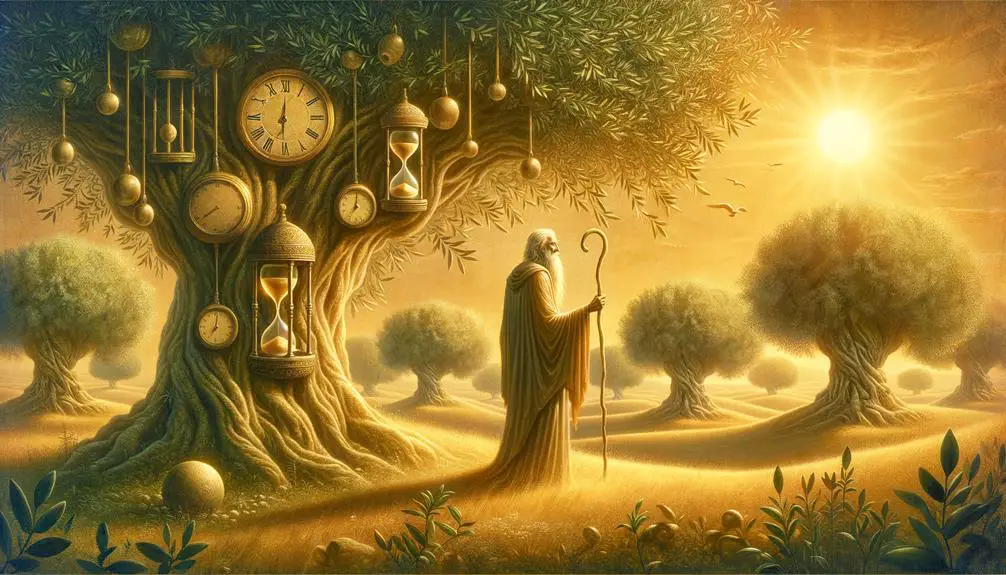
You'll find that analyzing the biblical lifespan overview provides a fascinating window into the era and context of the second oldest man in the Bible.
This exploration not only sheds light on his extraordinary age but also situates it within the broader historical and cultural framework of the time.
Biblical Lifespan Overview
In the biblical narrative, lifespans stretching into centuries aren't uncommon, reflecting an era where divine intervention and moral lessons were intertwined with human longevity. This phenomenon raises intriguing points when drawing modern comparisons and considering the challenges of age verification.
- Divine Intervention: Characters were often depicted as living longer as a sign of God's favor or a narrative tool to impart lessons.
- Moral Lessons: Extended lifespans served to emphasize the virtues or flaws of these biblical figures.
- Modern Comparisons: Today, such extraordinary ages invite skepticism due to scientific understanding of human biology.
- Age Verification: Unlike current methods, ancient records lacked systematic verification, adding layers of myth to these accounts.
This analysis highlights the complexity of interpreting biblical lifespans through a contemporary lens.
Historical Context Analysis
Delving into the historical context of biblical lifespans demands a careful examination of the era and its cultural, religious, and societal underpinnings, which profoundly influenced these narratives.
You'll find that archaeological evidence plays a pivotal role in understanding the cultural beliefs of ancient societies, especially their views on longevity and divine favor. These beliefs, deeply embedded in the fabric of their daily lives, are mirrored in the biblical texts, where extraordinarily long lifespans serve as symbols of righteousness and divine blessing.
Analyzing this context, you discern that the portrayal of such lifespans isn't merely literal but reflects the values and aspirations of the time. It's through this lens of cultural and religious significance that you can truly grasp the essence of these ancient narratives.
Significance of Age
Many scholars argue that the remarkable ages recorded in the Bible, particularly for figures like the second oldest man, often symbolize more than mere longevity, reflecting instead on qualities such as wisdom, virtue, and divine favor. This biblical longevism isn't just a testament to the individual's significance but also serves as a metaphor for broader themes that resonate through time.
First Subtopic: Modern Implications and Health Conjectures
In today's context, the extraordinary lifespans mentioned in the Bible inspire a mix of awe and skepticism. While some view these ages as literal truths, others see them as allegorical, carrying implications for modern beliefs about health, morality, and spirituality. There's a burgeoning interest in deciphering whether these biblical figures possessed unique health practices or genetic advantages. This curiosity bridges ancient text and contemporary health conjectures, prompting a reevaluation of what contributes to a long, fulfilling life.
- Wisdom and Experience: The age of these biblical figures is often interpreted as a symbol of accumulated wisdom and experience, suggesting that with age comes a deeper understanding of life and God's will.
- Divine Favor and Protection: Their longevity is sometimes seen as a sign of divine favor, indicating a close, blessed relationship with God.
- Moral Virtue: The long lifespans are also thought to represent the reward for a virtuous life, implying that righteousness is linked to longevity.
- Historical and Cultural Context: These ages provide insight into the historical and cultural contexts of the biblical narratives, offering a window into how early societies viewed aging, mortality, and the divine.
Through this lens, the significance of age in the Bible transcends mere numbers, embodying lessons on living a life aligned with spiritual and moral principles.
Jared Vs. Methuselah

When comparing Jared and Methuselah, two of the oldest figures in the Bible, it's crucial to analyze the nuanced distinctions in their lifespans and the implications these have on biblical narratives and themes. Jared, living to 962 years, and Methuselah, who reached 969 years, represent pinnacle examples of biblical longevity. Yet, their ages are more than mere numbers; they encapsulate deep-seated beliefs about human existence and divine favor in ancient texts.
Diving into age accuracy, you'll find that these figures challenge modern perceptions of human lifespan. The Bible's portrayal of such extended lives invites a scholarly debate on whether these ages should be interpreted literally or metaphorically. This debate isn't just academic; it delves into how ancient cultures perceived time and divinity's influence on life. The suggestion that these ages may be symbolic or exaggerated forms part of the broader discussion on longevity myths, which are prevalent in many cultures around the world.
Moreover, the slight age difference between Jared and Methuselah invites speculation about their respective roles and the significance of Methuselah being the older. This distinction, albeit small, might hint at a hierarchical importance or a special divine favor bestowed upon Methuselah. Analyzing these ages within the biblical context reveals layers of meaning beyond the literal, enriching our understanding of ancient narratives and the values they sought to impart.
Legacy and Lessons
Exploring the ages of Jared and Methuselah not only challenges our understanding of biblical lifespans but also paves the way for examining the profound legacies and lessons these ancient figures impart. Their stories, steeped in history and spiritual significance, encourage modern reflections and ethical implications that resonate even today. Let's delve into the key insights they offer:
- Resilience and Adaptation: Both Jared and Methuselah's long lives symbolize the ability to adapt and thrive amidst changing circumstances, a lesson of resilience that's pertinent in our fast-evolving world.
- Spiritual Reflection: Their narratives urge you to ponder the deeper spiritual meanings of existence, encouraging a journey towards understanding one's purpose and connection to the divine.
- Ethical Living: The ethical implications of their lives highlight the importance of living virtuously, emphasizing integrity, patience, and righteousness as timeless values.
- Legacy of Wisdom: These patriarchs' longevity is often interpreted as a testament to their wisdom, suggesting that true knowledge and understanding are accumulated over time and should be shared across generations.
In an analytical and detailed manner, their legacies aren't mere historical or religious curiosities but serve as foundational elements for ethical and philosophical discourse. They compel you to consider how ancient wisdom can inform modern ethical standards and personal conduct. Moreover, Jared and Methuselah's stories offer a unique lens through which to explore the complexities of human life, spirituality, and morality, making their lessons incredibly relevant for contemporary society.
Interpretations and Theories

Delving into the interpretations and theories surrounding Jared and Methuselah's extraordinary lifespans offers insights into the intricate interplay between myth, history, and theology. You might find that modern interpretations tend to scrutinize these biblical figures not just as historical entities but as carriers of deep symbolic meanings. The age symbolism, in particular, is a focal point of discussion, as it's believed to serve multiple layers of understanding within the text.
Scholars argue that the ages of these figures mightn't be literal but symbolic, representing virtues, spiritual states, or epochs. For instance, Methuselah's age, the longest recorded in the Bible, could symbolize the accumulation of wisdom, the blessing of God, or even a countdown to the flood. This interpretation aligns with the theory that ages in ancient texts often carry metaphorical rather than chronological significance.
In addition, you'll encounter the theory that these extended lifespans serve as literary devices, designed to bridge the vast temporal gap between the creation of the world and the narrative present of the biblical authors. This creates a sense of continuity and divine oversight across generations, reinforcing the themes of God's enduring covenant with humanity.
Critically, modern interpretations also engage with the socio-historical context of these texts. Understanding the lifespans within the cultural and theological framework of ancient societies sheds light on how these figures were used to convey moral, ethical, and spiritual lessons. Age symbolism, thus, becomes a powerful tool in the narrative, enriching the text with layers of meaning that resonate with readers across ages.
Frequently Asked Questions
How Do Modern Scientific Theories About Aging and Longevity Compare to the Biblical Accounts of Lifespans Like Jared's?
Modern scientific theories, such as telomere research and studies on oxidative stress, offer explanations for aging and longevity that diverge from biblical accounts. Telomeres, the protective caps on chromosomes, shorten with age, limiting cells' lifespans. Oxidative stress damages cells over time.
While these mechanisms explain the aging process scientifically, they don't support the extraordinary lifespans, like Jared's, depicted in the Bible, highlighting a gap between scientific understanding and biblical narratives.
Are There Non-Biblical Historical Records or Archaeological Evidence That Support the Existence and Ages of Biblical Figures Like Jared?
You're exploring if historical verification and archaeological methods can substantiate the ages and existence of figures from ancient texts. While these tools offer insight into past civilizations, directly correlating them to specific individuals and their purported lifespans is challenging.
The scarcity of concrete evidence limits definitive conclusions. However, ongoing archaeological efforts continue to provide valuable context, although they rarely confirm individual ages or the precise details of their lives as recorded in ancient writings.
How Has the Portrayal of Jared and Other Long-Lived Biblical Figures Influenced Art, Literature, and Culture Throughout History?
Imagine a world where lifespans stretch centuries. Jared and his fellow long-livers have left a profound mark, not just in religious texts but across art, literature, and culture. Their stories, symbolizing wisdom and the passage of time, have woven through countless works, enriching our cultural legacy.
Analyzing these portrayals, you'll find a tapestry of human expression, reflecting our fascination with longevity and the mysteries of life itself.
What Are the Genetic Implications of the Long Lifespans Reported in the Bible, and Have There Been Any Scientific Studies Attempting to Link These Accounts to Known Genetic Factors?
You're delving into the genetic implications of the Bible's long lifespans, wondering if there's a scientific basis.
Genetic mutations and telomere research are key areas explored. Scientists have speculated whether genetic factors could explain these ages. While no direct link has been proven, research into telomeres, which affect aging, offers intriguing possibilities.
However, you'll find that, so far, these biblical lifespans remain largely a mystery in the genetic landscape.
How Do Different Religious Traditions Besides Judaism and Christianity Interpret the Long Lifespans of Figures Like Jared in Their Theological or Philosophical Contexts?
In exploring how various religious traditions view long lifespans, like Jared's, you'll find fascinating mythological parallels and cultural symbolism.
These narratives often reflect humanity's deep-seated desire for wisdom and transcendence.
For example, Hindu texts feature figures with extensive lifespans, symbolizing the cyclical nature of life and enlightenment.
This mirrors the broader human quest for understanding and surpassing natural limits, showcasing a universal aspiration across different cultures.
Conclusion
You've journeyed through the labyrinth of ancient timelines, tracing Jared's notable legacy beside Methuselah—the age-old G.O.A.T of longevity.
Unraveling their intertwined lives, you've analyzed the profound implications of their ages within the biblical context.
Jared's story, shadowed by Methuselah's record-breaking years, reminds us of the rich tapestry of human history and spirituality. It challenges modern perceptions of time and mortality, urging a reevaluation of our own legacies in this digital era.
Their narratives, steeped in antiquity, continue to inspire and perplex scholars and laymen alike.


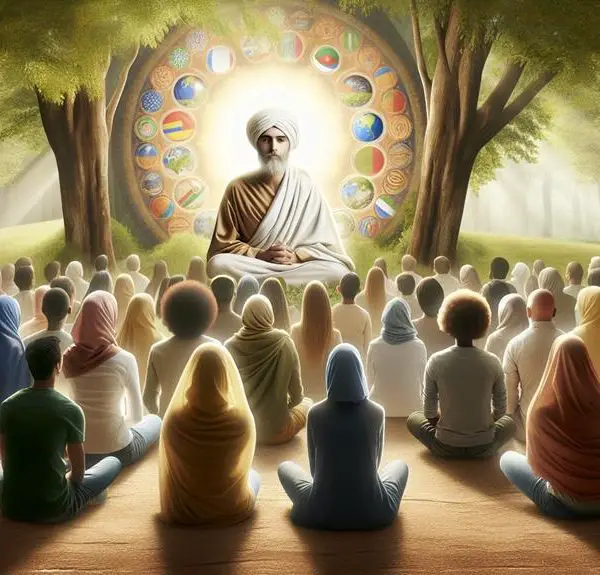
Sign up